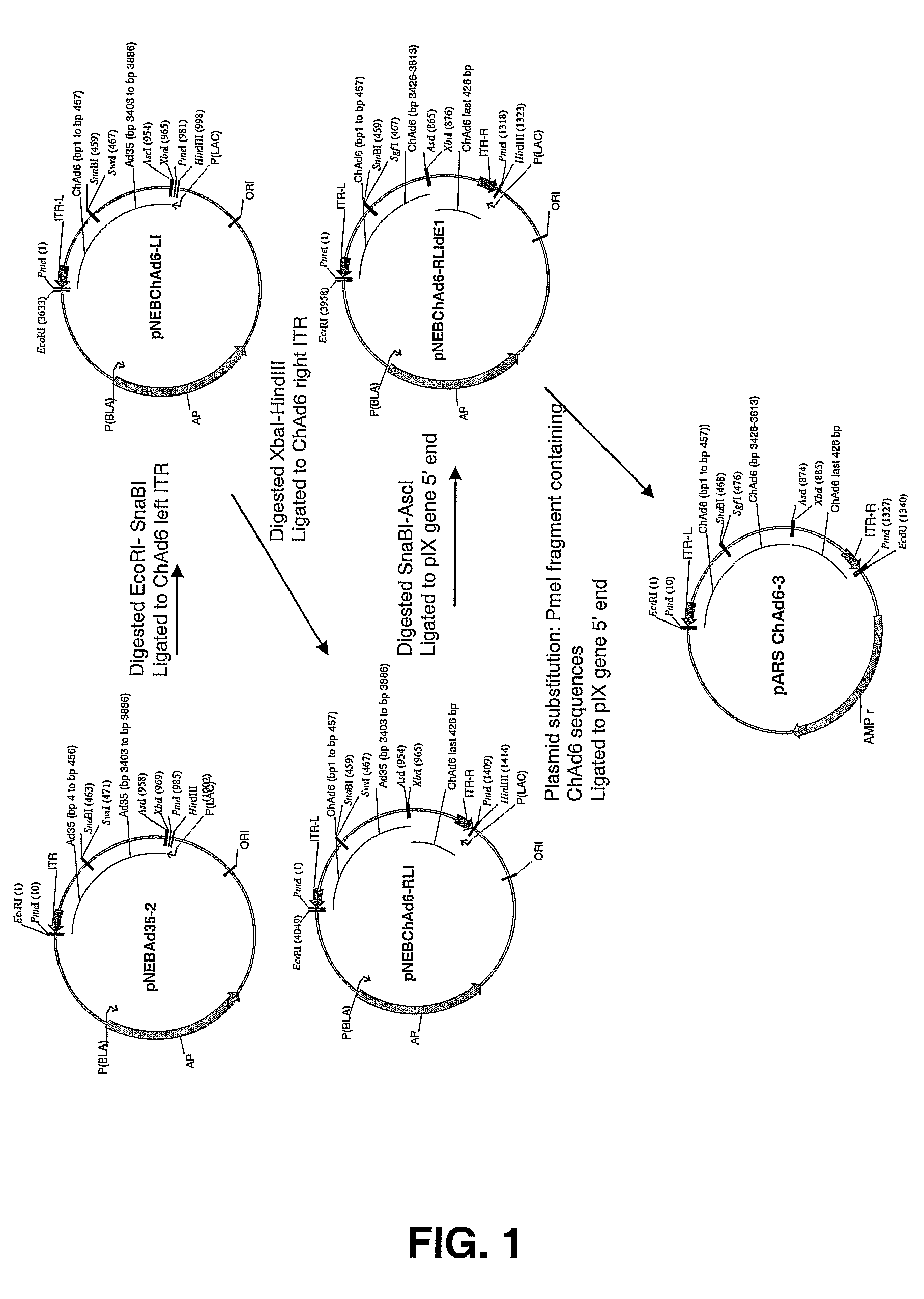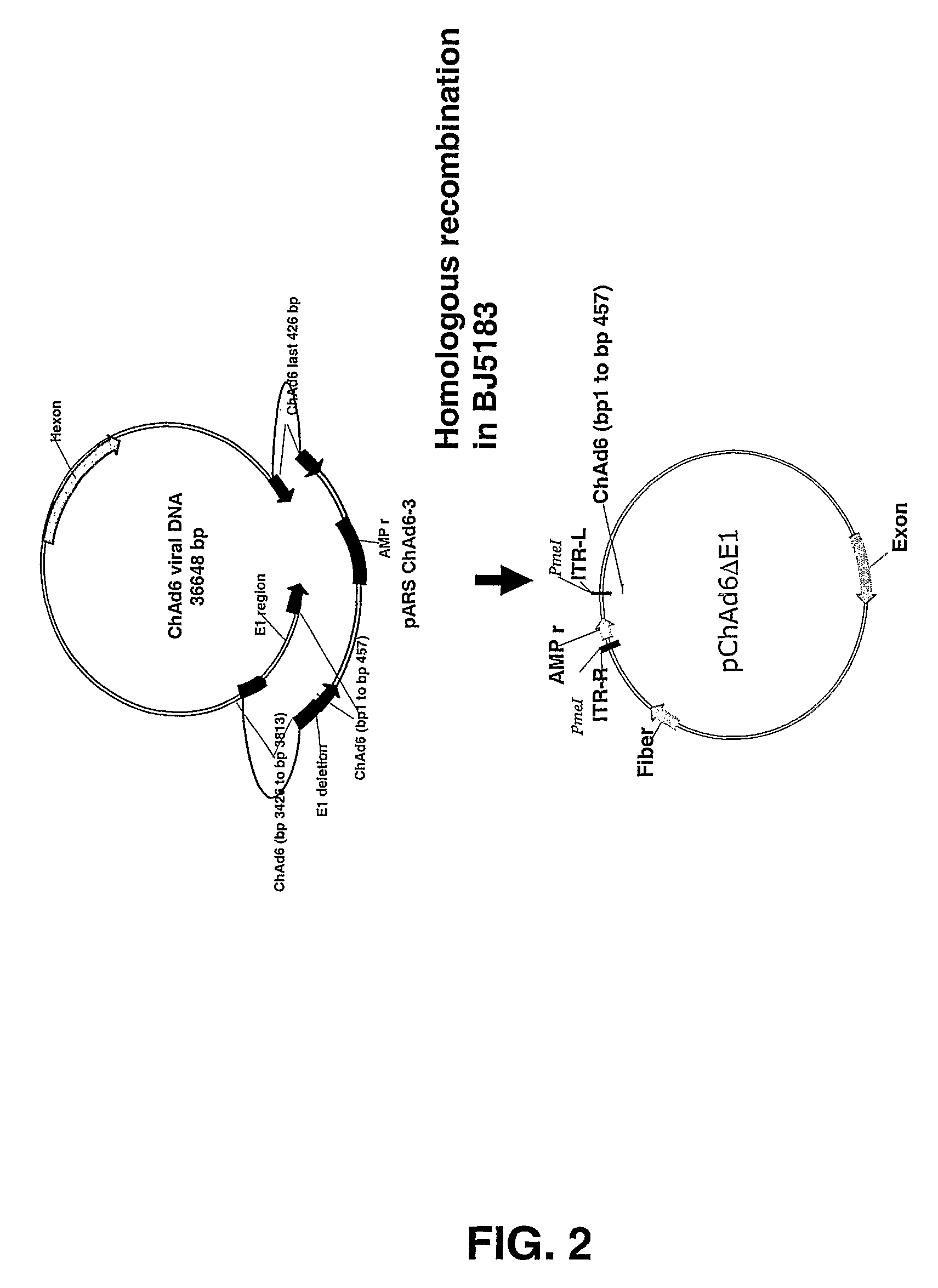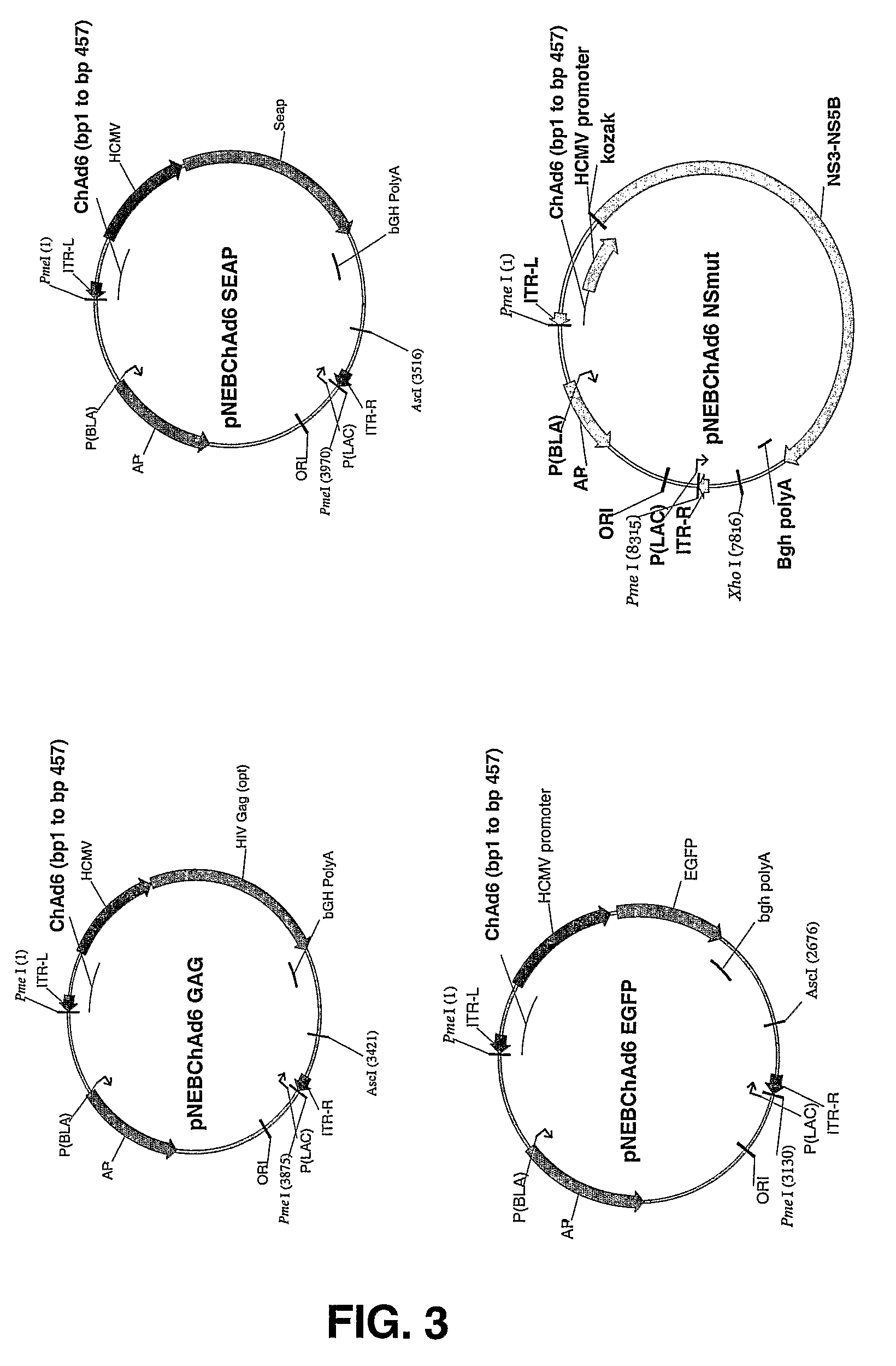Chimpanzee adenovirus vaccine carriers
a technology of chimpanzee adenovirus and vaccine carrier, which is applied in the field of recombinant vectors, can solve the problems of limited utility of these serotypes as vaccine carriers, vectors derived from viruses that naturally infect and replicate in humans may not be optimal candidates for use as vaccine carriers, and the production method used to propagate recombinant viruses will give rise to vector stocks
- Summary
- Abstract
- Description
- Claims
- Application Information
AI Technical Summary
Benefits of technology
Problems solved by technology
Method used
Image
Examples
example 1
Isolation, Cloning, Sequencing and Characterization of ChAds Chimpanzee Adenovirus Isolation
[0160]Stool specimens were collected in viral transport medium (VTM; Microtest M4-R Multi-Microbe Transport Medium, Remel Inc.) then frozen or frozen directly at −70° C. at NIRC (New Iberia Research Center 4401 W. Admiral Doyle Drive New Iberia, La. 70560). The specimens were kept frozen at <−70° C. until they were processed for inoculation into cell cultures. At that time, the specimens were thawed and then vortexed in excess of chilled viral transport medium. After the specimens had dissociated into suspensions, they were centrifuged for 10 min at 1500-1800 rpm. The supernatants were filtered through 0.8 and 0.2 μm syringe filters in series and then the filtered material was inoculated into cell cultures (200-250 μL into shell vials and 250-300 μL into tube cultures). Each processed specimen was inoculated into tube cultures and shell vial cultures seeded with 293 cells or A549 cells.
[0161]...
example 2
ChAd Shuttle Vector and Expression Vector Construction and Rescue Vector Construction and Rescue
[0175]Genomic viral DNA was cloned into a standard plasmid vector by homologous recombination with an appropriate shuttle vector containing viral DNA sequences derived from both left and right end of viral genome (FIG. 2). As described more fully below, the sequence homology observed between viruses classified in the same serotype subgroup was exploited to develop group-specific shuttle vectors. Genomic viral DNA of Chimp adenovirus classified into subgroup D and E resulted to be sufficiently homologous to allow the construction of a common shuttle vector in order to clone viruses belonging to both subgroups.
Construction of a Subgroup D / E Shuttle Vector
[0176]The ChAd6 viral genome was fully sequenced (SEQ ID NO: 2) and the information obtained was used to construct a shuttle vector to facilitate cloning by homologous recombination of subgroup D and E chimpanzee adenovirus.
[0177]Constructi...
example 3
Neutralization Studies
[0187]Neutralization assays were carried out in order to evaluate the prevalence in human sera of neutralizing antibodies against the chimpanzee adenoviruses disclosed herein. The assay evaluated the effects of serum preincubation on the ability of chimp adenoviruses carrying the gene for secreted alkaline phosphatase (SEAP) to transduce human 293 cells. The neutralization titer is defined as the dilution of serum giving a 50% reduction of the SEAP activity observed in the positive control with the virus alone.
[0188]From 2×106 to 1.5×107 physical particles of CV33-SEAP, CV32-SEAP and ChAd3-SEAP vector were diluted in 100 μl of complete medium and added to an equal volume of human or chimp serum diluted in complete medium. Each serum samples was tested at various dilutions (five 4-fold increments starting from 1 / 18 dilution through 1:4608). Samples were pre-incubated for one hour at 37° C. and then added to 293 cells seeded into 96-well plates (3×104 cells / well)...
PUM
| Property | Measurement | Unit |
|---|---|---|
| diameter | aaaaa | aaaaa |
| length of time | aaaaa | aaaaa |
| time | aaaaa | aaaaa |
Abstract
Description
Claims
Application Information
 Login to View More
Login to View More - R&D
- Intellectual Property
- Life Sciences
- Materials
- Tech Scout
- Unparalleled Data Quality
- Higher Quality Content
- 60% Fewer Hallucinations
Browse by: Latest US Patents, China's latest patents, Technical Efficacy Thesaurus, Application Domain, Technology Topic, Popular Technical Reports.
© 2025 PatSnap. All rights reserved.Legal|Privacy policy|Modern Slavery Act Transparency Statement|Sitemap|About US| Contact US: help@patsnap.com



